Erlangen
| Erlangen | |
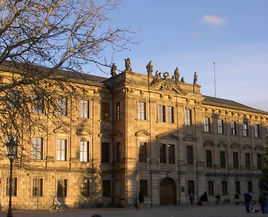 |
|
 |
|
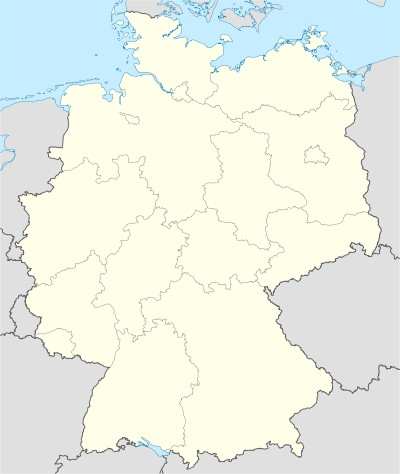 Erlangen
|
|
| Coordinates | |
| Administration | |
| Country | Germany |
|---|---|
| State | Bavaria |
| Admin. region | Middle Franconia |
| District | Urban district |
| City subdivisions | 20 Ortsteile |
| Lord Mayor | Siegfried Balleis (CSU) |
| Basic statistics | |
| Area | 76.90 km2 (29.69 sq mi) |
| Elevation | 280 m (919 ft) |
| Population | 105,554 (31 December 2009)[1] |
| - Density | 1,373 /km2 (3,555 /sq mi) |
| Other information | |
| Time zone | CET/CEST (UTC+1/+2) |
| Licence plate | ER |
| Postal codes | 91001–91058 |
| Area codes | 09131, 0911 (OT Hüttendorf), 09132 (OT Neuses), 09135 (OT Dechsendorf) |
| Website | www.erlangen.de |
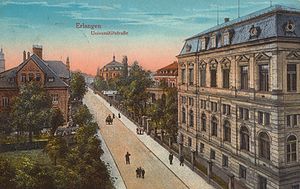
Erlangen is a Middle Franconian city in Bavaria, Germany. It is located at the confluence of the river Regnitz and its large tributary, the Untere Schwabach. Erlangen has more than 100,000 inhabitants.
Erlangen is today dominated by the University of Erlangen-Nuremberg and the numerous branch offices of Siemens AG, as well as a large Institute of the Fraunhofer Society. An event that still influences the city was the settlement of Huguenots after the withdrawal of the Edict of Nantes in 1685.
Contents |
History
Erlangen was first mentioned officially in 1002 under the name of Villa Erlangon. In 1361, the village was sold to Emperor Karl IV. Three years later, a city was built close to the village, which in 1374 got its own coining station (mint). In 1398, the municipal rights were confirmed. In 1402, the city was vested to the House of Hohenzollern as part of the principality of Brandenburg-Kulmbach (from 1603 on Brandenburg-Bayreuth), staying under their rule until 1806. During the four year Napoleonic occupation, Erlangen was the capital of the so-called "Low County" (Unterland) of the principality, encompassing the area until Neustadt an der Aisch and separated from the "High County" (Oberland) by a land corridor. In 1810 it became part of the Kingdom of Bavaria, together with the rest of former Brandenburg-Bayreuth.
While being part of the Brandenburg-Bayreuth, the first French Huguenot refugees arrived in Erlangen in 1686. Christian Ernst, Margrave of Brandenburg-Bayreuth, built a "new town" (Neustadt) for them. In 1706, the old town (just below the site of the annual Bergkirchweih) was almost completely destroyed by a fire, but soon rebuilt. In 1812, the old and new towns were merged into one.
In 1742, Frederick, Margrave of Brandenburg-Bayreuth, founded a university for the residency town Bayreuth, but due to the rebelliousness of the local students, the university was transferred to Erlangen. Only later did it obtain the name of "Friedrich-Alexander-University" and become a Prussian state university. Famous students of these times were Johann Ludwig Tieck and Wilhelm Heinrich Wackenroder.
Already during the Bavarian municipal reform of 1818, the city was endowed with its own administration. In 1862, the canton administration Erlangen was founded, from which later arose the administrative district of Erlangen. In 1972, this district was merged with the administrative district of Höchstadt. Erlangen became the capital of this newly founded district Erlangen-Höchstadt. During this municipal reform, Erlangen was effectively enlarged considerably, so that by 1974, it had more than 100,000 inhabitants.
Points of interest
- The University of Erlangen-Nuremberg (Friedrich-Alexander-Universität, [1]) was founded in 1742 by Frederick, Margrave of Brandenburg-Bayreuth, in the city of Bayreuth, but was relocated to Erlangen the next year. Today, it features 11 departments (German "Fakultäten"), 2 of which (Economics and Education) are located in Nuremberg. About 24,000 students study at this university, of which about 20,000 are located in Erlangen.
- The Botanischer Garten Erlangen is a botanical garden maintained by the university.
Bergkirchweih
The Bergkirchweih is an annual beer festival, similar to the Oktoberfest in Munich but smaller in scope, and therefore more intimate. It takes place during the twelve days before and after Pentecost; this period is called the "fifth season" by the locals. The beer is served at wooden tables in one-liter stoneware jugs under the trees of the "Berg", a small, craggy, and wooded hill with old caves (beer cellars) owned by local breweries.
The beer festival draws more than one million visitors each year. There are carnival rides of high tech quality, food stalls of every imaginable franconian dish like bratwurst, suckling pig, burnt almonds, and giant pretzels.
It is commonly known by local residents as the "Berchkärwa" (pronounced "bairch'-care-va") or simply the "Berch", as in "Gehma auf'n Berch!" ("Let's go up the mountain!").
This is an outdoor event, packed with Franconians in various states of enjoyment. Despite the relatively high number of visitors it is practically unknown by tourists and outside Bavaria.
Districts
- Am Anger
- Alterlangen
- Bruck, pop. 20,000
- Büchenbach
- Burgberg
- Dechsendorf
- Eltersdorf, pop. around 3,200
- Frauenaurach
- Häusling
- Hüttendorf
- Innenstadt
- Kosbach
- Kriegenbrunn
- Neusses
- Röthelheim
- Schallershof
- Siedlung Sonnenblick
- Sieglitzhof/Buckenhofer Siedlung
- Steudach
- Tennenlohe [2]
Historical population
| Year | Population |
|---|---|
| 1495 | 292 |
| 1630 | 550 |
| 1752 | 7,939 |
| 1830 | 9,800 |
| December 1, 1871¹ | 12,500 |
| December 1, 1890¹ | 17,559 |
| December 1, 1900¹ | 22,953 |
| December 1, 1910¹ | 24,877 |
| June 16, 1925¹ | 29,597 |
| June 16, 1933¹ | 32,348 |
| May 17, 1939¹ | 35,964 |
| September 13, 1950¹ | 50,690 |
| June 16, 1961¹ | 69,552 |
| May 27, 1970¹ | 84,110 |
| June 20, 1975 | 100,700 |
| June 30, 1980 | 100,900 |
| June 30, 1985 | 100,000 |
| May 27, 1987¹ | 99,808 |
| June 30, 1997 | 100,700 |
| December 31, 1997 | 100,330 |
| December 31, 1998 | 100,775 |
| December 31, 1999 | 100,750 |
| December 31, 2000 | 100,778 |
| December 31, 2001 | 101,912 |
| December 31, 2002 | 102,198 |
| December 31, 2003 | 102,449 |
| December 31, 2004 | 102,627 |
| December 31, 2005 | 103,426 |
Historical mayors of Erlangen
- 1818–1827: Johann Sigmund Lindner
- 1828–1855: Johann Wolfgang Ferdinand Lammers
- 1855–1865: Carl Wolfgang Knoch
- 1866–1872: Heinrich August Papellier
- 1872–1877: Johann Edmund Reichold
- 1878–1880: Friedrich Scharf
- 1881–1892: Georg Ritter von Schuh
- 1892–1929: Theodor Klippel
- 1929–1934: Hans Flierl
- 1934–1944: Alfred Groß (NSDAP)
- 1944–1945: Herbert Ohly (NSDAP)
- 1945–1946: Anton Hammerbacher (SPD)
- 1946–1959: Michael Poeschke (SPD)
- 1959–1972: Heinrich Lades (CSU)
- 1972–1996: Dietmar Hahlweg (SPD)
- 1996–present: Siegfried Balleis (CSU)
International relations
Erlangen is twinned with several cities:
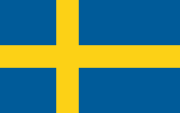 Eskilstuna, Sweden, since 1961.
Eskilstuna, Sweden, since 1961. Rennes, France, since 1964.
Rennes, France, since 1964.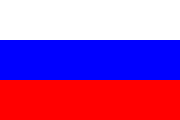 Vladimir, Russia, since 1983.
Vladimir, Russia, since 1983. Jena, Thuringia, Germany, since 1987.
Jena, Thuringia, Germany, since 1987. Stoke-on-Trent, United Kingdom, since 1989.
Stoke-on-Trent, United Kingdom, since 1989. San Carlos, Nicaragua, since 1989.
San Carlos, Nicaragua, since 1989. Beşiktaş, Turkey, since 2004.
Beşiktaş, Turkey, since 2004.
Further partnerships
References
- ↑ "Fortschreibung des Bevölkerungsstandes" (in German). Bayerisches Landesamt für Statistik und Datenverarbeitung. 31 December 2009. https://www.statistikdaten.bayern.de/genesis/online/online?sequenz=statistiken&selectionname=12411.
External links
- www.erlangen.de
- www.erlangeninfo.de Erlangen City Guide
- University of Erlangen
- Ferris Barracks - former U.S. Army Kaserne in Erlangen
|
||||||||||||||
|
||||||||